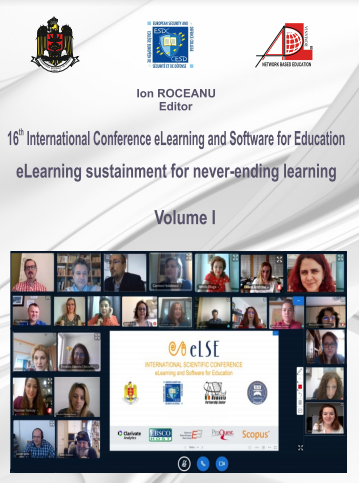USING INTERACTIVE WEB-BASED ANIMATIONS TO HELP STUDENTS TO FIND THE OPTIMAL ALGORITHMS OF RIVER CROSSING PUZZLES
USING INTERACTIVE WEB-BASED ANIMATIONS TO HELP STUDENTS TO FIND THE OPTIMAL ALGORITHMS OF RIVER CROSSING PUZZLES
Author(s): Ladislav VéghSubject(s): Higher Education , Educational Psychology, ICT Information and Communications Technologies, Distance learning / e-learning, Pedagogy
Published by: Carol I National Defence University Publishing House
Keywords: Algorithmic thinking; river crossing puzzles; interactive web-based animations;
Summary/Abstract: To acquire algorithmic thinking is a long process that has a few steps. The most basic level of algorithmic thinking is when students recognize the algorithms and various problems that can be solved with algorithms. At the second level, students can execute the given algorithms. At the third level of algorithmic thinking, students can analyze the algorithms, they recognize which steps are executed in sequences, conditions or loops. At the fourth level, students can create their algorithms. The last three levels of algorithmic thinking are: the implementation of the algorithms in a programming language, modifying and improving the algorithms, and creating complex algorithms. In preliminary research related to algorithmic thinking, we investigated how first-year undergraduate computer science students of J. Selye University can solve problems associated with the second, third and fourth level of algorithmic thinking. We chose these levels because these levels do not require to know any programming language. The tasks that students had to solve were for example: what will be the route of a robot when it executes the given instructions, how many times we need to cross a river to carry everyone to another river-bank. To solve these types of tasks requires only good algorithmic thinking. The results showed that students reached 81.4% average score on tasks related to the execution of given algorithms, 72.3% average score on tasks where they needed to analyze algorithms, and 66.2% average score on tasks where students needed to create algorithms. The latter type of tasks were mostly various river-crossing problems. Even though, that students reached a 66.2% average score on these tasks, if we had accepted only solutions with the optimal algorithms (minimal number of river crossing), they would have reached only a 21.3% average score, which is very low. To help students find the optimal algorithms of river crossing puzzles, we developed several interactive web-based animations. In the last part of this paper, we describe these animations, we summarize how they were created and how they can be used in education. Finally, we conclude and briefly mention our plans related to our future research.
Journal: Conference proceedings of »eLearning and Software for Education« (eLSE)
- Issue Year: 16/2020
- Issue No: 01
- Page Range: 84-90
- Page Count: 7
- Language: English

